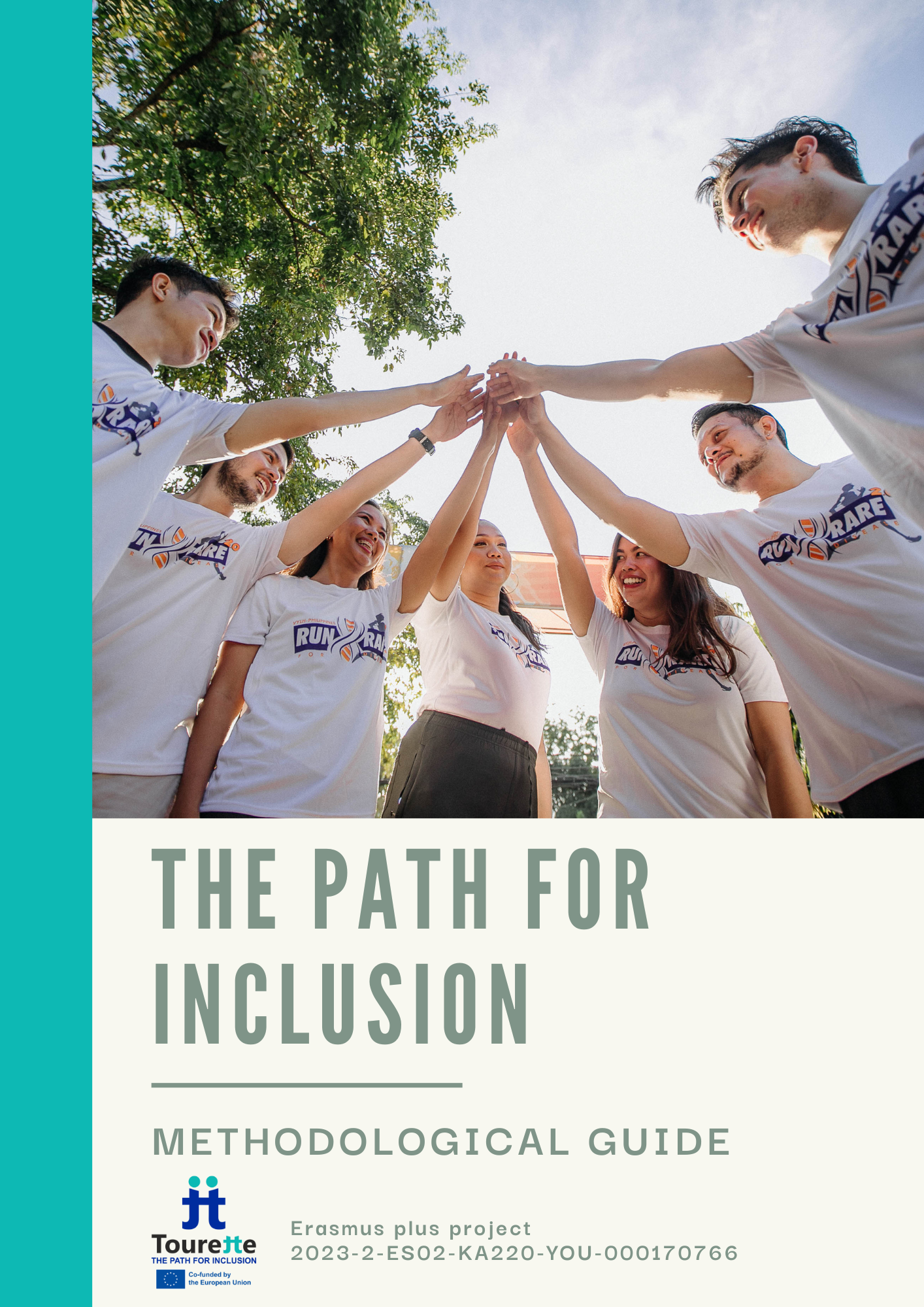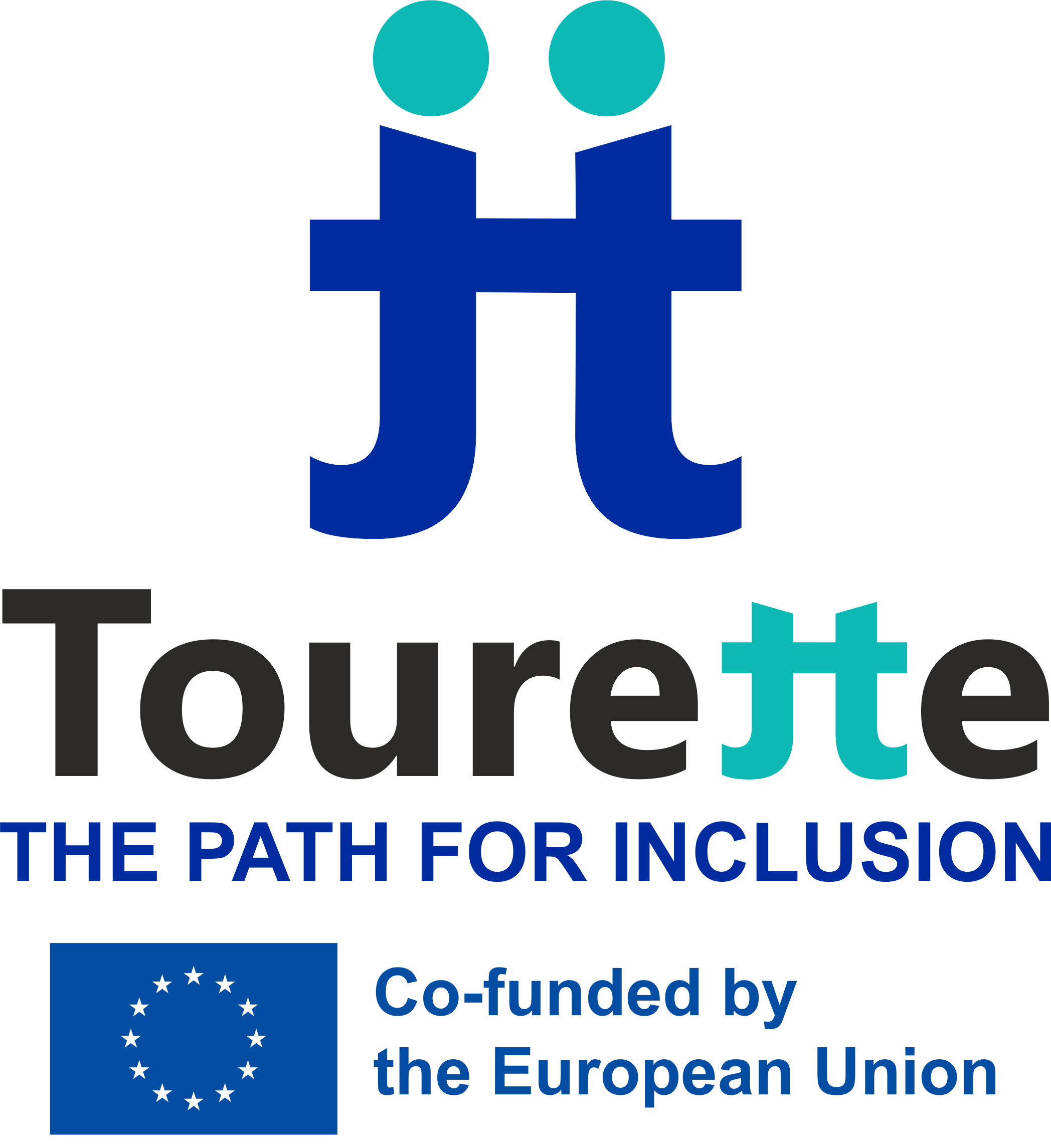FOR YOUTH WITH ST
The second part of the guide is directly focused on the young people with TS themselves, with the aim of giving them all the tools they need to carry out the training itineraries created in our strategy and to overcome the different goals designed to overcome their barriers and obtain the 6 digital badges for each milestone passed.
FOR SOCIAL ENTITIES
The first part of the guide is aimed at social entities, non-formal training schools, NGOs, foundations and public institutions with the objective of offering them all the necessary knowledge to create their own training itineraries with our methodology and work with young people with TS, guaranteeing their inclusion.
DESCRIPTION
The main result of WP2 is the PATH FOR INCLUSION STRATEGY that will allow access to young people with Tourette Syndrome (TS) to a process of training and empowerment through resources and personalized itineraries. Through this strategy we are generating personalized itineraries that establish a series of actions that lead to empowerment, participation, entrepreneurship and social inclusion of young people with TS, both for their autonomous use and for the use of entities and youth associations that want to work with them. It is a unique method of inclusion based on non-formal and informal learning that stimulates creativity, active participation and initiative.
This strategy is being embodied in the METHODOLOGICAL GUIDE “THE PATH FOR INCLUSION”: YOUTH WITH ST EMPOWERING THEMSELVES TO BUILD A BETTER WORLD (RP4).

METHODOLOGY
The methodology we propose focuses on the creation and implementation of adapted and personalized itineraries for young people with Tourette Syndrome (TS), aimed at guiding them in a process of training and non-formal social, personal and labor inclusion in five key areas (LEISURE AND LEISURE TIME, ENVIRONMENT, VOLUNTEERING, WORK and PERSONAL RELATIONSHIPS) through emotions (FEAR AND CONFIDENCE, IRAGE AND SERENITY, SHAME AND PRIDE/AUTOESTEEM).
Emotions play a crucial role in the life of any person, but in the case of young people with TS, they take on a special importance. Tourette Syndrome is a neurological disorder characterized by motor and vocal tics that can fluctuate in intensity and frequency, often caused by emotional factors such as stress, anxiety or frustration.
Therefore, in order to ensure true inclusion of these young people with TS, the innovative methodology we are creating through these personalized itineraries, not only encompasses five key areas to achieve their inclusion and empowerment, but does so by directly addressing the real needs of these young people to cope with their emotions.
CONTENTS
PART 1: FOR SOCIAL ENTITIES
1-GETTING TO KNOW THE ST
1.1. What is Tourette’s syndrome? How does it affect?
1.2. TS-derived disorders
1.3. T.S. in youth
1.4. The social environment and the young person with TS
2- THE PATH OF INCLUSION STRATEGY
2.1. Strategy objectives
2.2. User analysis
2.3. Preparation of adapted itineraries
2.4. Measuring success in activities
2.5. Digital badges
3-AFTER THE ITINERARIES, INTEGRATION INTO THE ENTITY
2.1. What to do when the young person has achieved the badges?
2.2. Roles of a young person with TS
2.3. Working methods in the partnership
2.4. Useful tips in everyday life
PART 2: FOR THE YOUNG PERSON WITH TS
1. ITINERARIES
1.1. How do I access the itineraries?
1.2. Frequently asked questions about carrying out the activities
1.3. Non-formal training through the pathway
2- DIGITAL BADGES
2.2. What are they?
2.3. What are they for?
2.4. Certification processes through the Youthpass
3- PROMOTER OF CHANGE
3.1. Duties of the ambassador PROMOTER OF CHANGE
3.2. Working with social entities and participation
3.3. European values for building a better future
